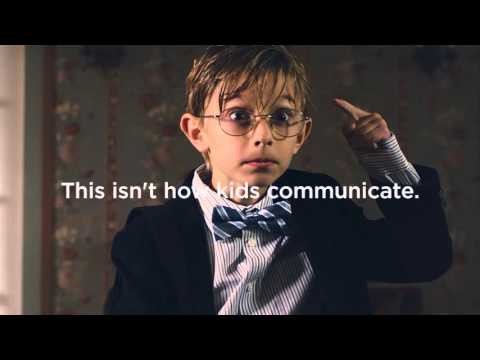“Children’s play is not mere sport. It is full of meaning and import.” – Fd . Forebel
I am often asked by parents regarding the effectiveness of play therapy as a form of treatment. Parents ask, “But it’s just play. Can’t they do that at home?” Although the treatment might be enjoyable for the child, play therapy is not just play. Play therapy is meaningful.
Children are often looked at as miniature adults, expected to communicate with us verbally about how they think and feel. This expectation puts children at a disadvantage because it does not consider where the child is developmentally. Check out the short video below titled, Introducing Andrew, to get a better representation of how children do and do not communicate their reality.
I am not saying children are incapable of expressing themselves through verbal communication; I am saying it is not their most natural form of communication. The most natural form of communication is play and activity. Children use toys like words, and play is their language.
Play Reveals the Child’s Internal Emotional World
Children are more comfortable with play, so they express themselves more fully and more directly through self-initiated and spontaneous play. Unlike with verbal expression, play is automatic and less restricting. It allows the therapist to see inside the world of the child without placing a barrier to the therapeutic relationship. As a therapist, it is our job to go where the child is and communicate with them on their level. If a therapist asked a child “Tell me about this,” young children are placed at a disadvantage of having to accommodate the therapist.
Let’s consider a 5-year-old girl who has repeatedly witnessed domestic violence and is acting out aggressively at school—she is being labeled a bully. She comes into the playroom and turns the room into a battlefield with lion cubs crying out for help during a battle because a mighty lion has taken the dollhouse under siege. The child does not consciously think, “I am afraid of the person who is abusing my mother; so I will pretend the lion is the scary man and I am the lion cub, and no one will know what I am doing.” During play, children can safely express their experiences and feelings because they are not cognitively aware that they are symbolically playing out a threatening experience (Landreth, 2012).
It is important to note that play and reality are not that different for children.
At first glance, this child who witnessed domestic violence may seem to be acting out anger and aggression in her play, but to a therapist she is revealing the painful world she has experienced. In this example, a therapist may be invited into the child’s play and the child might assign the therapist the role of the victim. In this role the therapist will repeatedly attempt to defend the family from the bad guy in the dollhouse only to have her efforts fail. Immediately, the therapist would feel how it feels to be the child in her home. By acting out a frightening situation symbolically, children experience being in control of the event and move toward an inner resolution, therefore better coping with the problem (Landreth, 2012).
“Get ready, the bad guy is coming for you!” the child exclaims as she prepares to attack in the role of the bad guy. The therapist sends in police cars to try to help the situation only for them to be rendered useless and unsuccessful by the bad guy. Even the other animal family members in the dollhouse have no way of helping as they begin to hide and run. The therapist is forced to remain in the chaos, afraid and stuck; experiencing the helplessness that child feels every day. Her anger expressed in play, just like with her behavior in school, is likely her reaction to underlying feelings of pain and helplessness. These feelings are probably too difficult and overwhelming for her to put into words but communicated freely through play.
Through play, children can use toys to say what they cannot say out loud for fear they might be reprimanded. Children can reveal:
1. What they have experienced.
2. Reactions to what was experienced.
3. Feelings about what was experienced.
4. What they wish, want or need.
5. Their perception of self.
Each of these messages is what a play therapist looks for in children’s play so they can better understand the child’s world to help them cope with what is causing them distress.
Play Therapy Offers Alternatives
Being aggressive at school might feel like the only way the 5-year-old client can avoid being the victim. Without her being connected to her feelings of vulnerability and victimhood she will not have the ability to address the pain from her homelife. The therapist will bring those parts together in the play.
During a play session in the middle of the most gruesome siege by the bad guy, the therapist pulls out a loyal toy soldier that yells out: “No bad guys allowed! All bad guys must leave!” Then something starts to happen. The therapist, through the toy soldier’s voice, is speaking for the part of the child that longs for peace and security. Therapist and child have now found a safe enough way to address the child’s vulnerability.
The child replies, “I really really like it when you say that! I don’t know why but I really like it! Say it again!” So, the therapist, as the toy solider, says it again, “No bad guys allowed!”
Play Therapy is Healing
The message communicated to the 5-year-old girl is this: it is not necessary to attack to be safe—she can defend herself with words at school. She can be assertive without being overly aggressive. She does not need to fight at school to avoid being the victim; attacking first is not the only way she can protect herself.
Play therapy helps children express and work through difficult emotions, as well as feel seen and heard by adults around them. As seen in the example with the 5-year-old girl, play therapy can be an effective tool to help children find alternative ways to cope with the world around them, but most importantly heal.
Lauren Klosterboer, M.A., LPC

